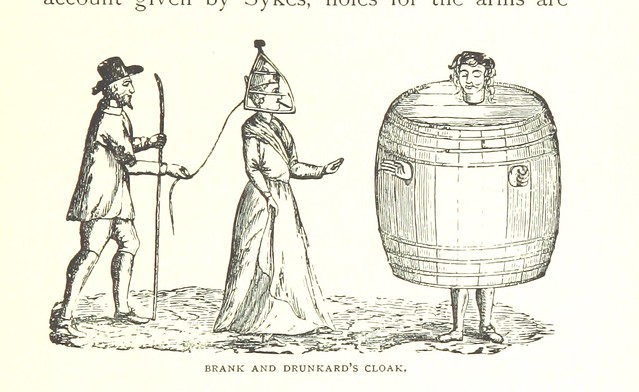Topics > Society > Blood Sports in the Past
Blood Sports in the Past
Dalston was long the headquarters of cock-fighting in Cumberland—“Dalston Black-reeds” are still spoken of as the best birds of the kind in the world. There is a tradition to the effect that cock-fighting was once carried on at Rose Castle, in the parish of Dalston, but the Rev. J. Wilson took particular pains to disprove the assertion. Against that must be put the following sentence which appeared in Good Words for December, 1894: “One curious adjunct to an episcopal residence, speaking loudly of the change of manners and the amelioration of tastes, is the cock-pit, where matches are said to have been at one time fought for the amusement of the Bishop and his friends.” The favourite day for cock-fights was Shrove Tuesday.
Cock-fighting was far from being the only barbarous sport enjoyed by the people of the northern counties. Bull-baiting and badger-baiting were probably never more popular than at the time when they were prohibited by law in 1835. There is still the bull ring at Appleby, and the spectators’ gallery was removed within living memory. At Kirkoswald and several other market-places in the two counties the rings are still firmly fixed to which the bulls were tethered during the baiting process. Mr. W. Wilson, in his brochure on “Old Social Life in Cumberland,” says: “In Keswick a large iron ring was formerly fixed in a stone block in the market-place; this was called the bull ring, and to this a bull, previous to being slaughtered, was fastened by the ring in its nose, and then baited and bitten by savage dogs amid dreadful bellowing till the poor beast was almost covered with foam, and quite exhausted. Great excitement prevailed when a bull was being baited, and large numbers assembled to witness the sport. On such occasions the market-place at Keswick was crowded, and many in order to obtain a good view, might be seen sitting on the roofs of the adjoining houses. Beyond the excitement which the exhibition produced among the spectators, the system was thought to be of great value in improving the quality of the beef, an aged bull being especially tough unless well baited before slaughtering. When the flesh of a bull was exposed for sale, it was the rule in Keswick and probably elsewhere, to burn candles during the day on the stall on which the meat was exposed for sale, in order that customers might be aware of the quality of the meat sold there.” In some other places in the two counties the penalty for killing and selling an unbaited bull was 6s. 8d.
Cruelty to Animals Act of 1835: extended the law to prohibit the keeping of premises for the purpose of staging the baiting of bulls, dogs, bears, badgers or other animals.

Co-Curate Page
Wreay Cock-fighting Bell
- In the distant past small silver bells were sometimes given as prizes for cock-fights held in schools. In England and Scotland, some schoolmasters supplemented their incomes with payments from boys …

from Newcastle libraries (flickr)
011434:The Bull Ring North Shields C. 1910
Pinned by Simon Cotterill


Co-Curate Page
Wreay Cock-fighting Bell
- In the distant past small silver bells were sometimes given as prizes for cock-fights held in schools. In England and Scotland, some schoolmasters supplemented their incomes with payments from boys …

from Newcastle libraries (flickr)
011434:The Bull Ring North Shields C. 1910
Pinned by Simon Cotterill







